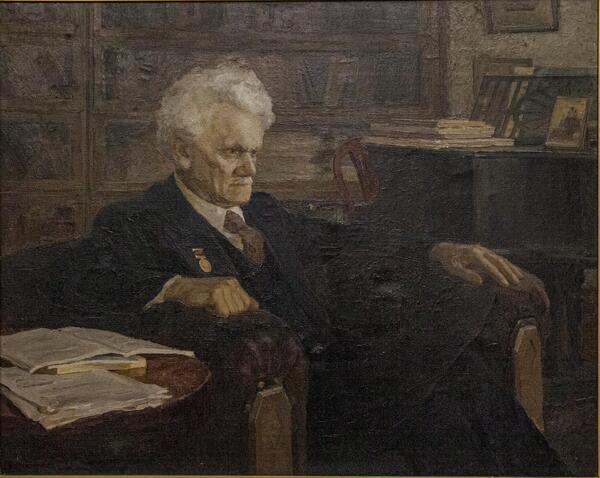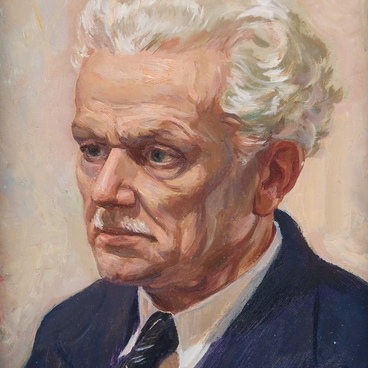Nikolay Mikhailovich Kolchitsky, a Soviet artist, member of the Union of Artists of the USSR, was born in 1907 into the family of a military official. He received a technical education and worked temporarily as an engineer at the Central Institute of Aircraft Engine Building. In the 1940s, after the end of the Great Patriotic War, Kolchitsky began working as an illustrator, and in 1946 he became a member of the Moscow Regional Union of Soviet Artists. In the 1950s, he began working in the science fiction genre, creating illustrations for science and science fiction books, fulfilling a linking role between modern science and science fiction. At the same time, Nikolay Kolchitsky worked a lot for the magazines “The Technique for Youth”, “The Spark”, “The Young Technician” and many others.
Nikolay Kolchitsky depicted orbital stations, spaceships, and starships based on special scientific works, and then his images found their way back from his canvases to science fiction works. Technical education and experience as an engineer enabled the artist to interpret complex projects in his own way and make them accessible to a simple viewer. The rich artistic legacy that Kolchitsky left was a special image of science fiction art. Shortly before the artist left for the science fiction genre, he painted a portrait of the remarkable musician, composer, pianist, and teacher Alexander Goldenweiser.
In the portrait, Goldenweiser sits in a large comfortable armchair near the piano. His face is concentrated and thoughtful, it seems that the musician is completely immersed in his thoughts. His posture and the position of his hands speak of his firm character, determination, great diligence, and inexhaustible energy. Goldenweiser wears an honorary badge of the Stalin Prize laureate on his chest — the badge testifies to the high appreciation and importance of his work in musical culture at home and abroad. The artist depicted the sitter against the backdrop of high shelves filled with books, showing the versatile interests of the famous pianist and his broad knowledge. On a small round table near the musician there are open music books, and on the other side there is a piano — these objects used to accompany Goldenweiser all the time.



